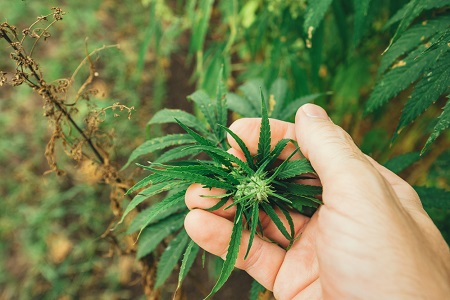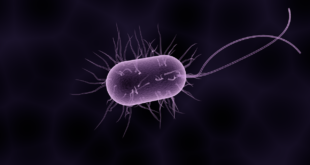
U.S., February 24, 2020 (420 INTEL)- Without the rigorous controls that exist at an approved professional cultivation facility, it’s easy to make a mistake — and make yourself sick in the process.
In the rare event of cannabis contamination, marijuana’s health benefits can turn into health hazards.
To minimize your risk of encountering contaminated marijuana, you should purchase medical cannabis from a regulated dispensary, and generally avoid growing your own marijuana at home (unless you really know what you’re doing). Without the rigorous controls that exist at an approved professional cultivation facility, it’s easy to make a mistake — and make yourself sick in the process.
Harmful Cannabis Contaminants: Mold, Heavy Metals, Pathogens, And Pesticides
Like any industrial crop, medical marijuana is grown and harvested under tightly controlled conditions. In fact, the standards in Massachusetts are so strict that they can actually impede patient access, which last summer led Governor Charlie Baker to grant temporary waivers allowing dispensaries to sell products that tested above the then set regulatory limited.
Though highly unlikely under such strict regulations, it’s possible for industrially-grown marijuana to become contaminated by other substances. This risk increases dramatically when you try to grow cannabis at home.
As long as you get your medicine from a Massachusetts marijuana dispensary, the risk of contamination is very low. However, you should still know how to identify marijuana that isn’t safe to use. Watch out for these five types of cannabis contaminants if you’re a medical marijuana patient.
Contaminant #1: Mold
As I mentioned in a previous article, cannabis should absolutely never feel damp, wet, slick, or gooey. If your marijuana seems moist or squishy, it means the plant is holding in water, which is a problem because mold can grow in wet conditions.
If you’ve ever seen fuzzy grey mold growing on old strawberries, you’re already familiar with Botrytis cinerea, the fungus that causes “bud rot.” Botrytis isn’t toxic, but in rare cases, can cause a respiratory allergic reaction called hypersensitivity pneumonitis, or “winegrower’s lung,” in which lung sacs called alveoli become inflamed. Hypersensitivity pneumonitis can be fatal, though this is quite rare. Typical symptoms include coughing, fever, and shortness of breath.
Contaminant #2: Heavy Metals in the Soil
Heavy metals are metals that have a high density or atomic weight, which is why they’re called “heavy” metals. Metals in this category include cadmium, arsenic, lead, mercury, and uranium. Heavy metals are present in the soil to varying degrees, depending on location.
Cannabis roots can suck up and retain these harmful metals and other chemical contaminants. In one 2002 study published in Industrial Crops and Products, “Hemp (Cannabis sativa L.) was used to examine its capability as a renewable resource to decontaminate heavy metal polluted soils.” The study found that “the highest concentrations of all examined metals were accumulated in the leaves,” but were also present in the seeds and fibers.
Contaminant #3: Cannabis Pathogens
Pathogens are viruses, bacteria, fungi, and other microorganisms capable of causing illness. For example, rhinoviruses and coronaviruses cause most cases of the common cold.
According to a report by the cannabis Safety Institute, an organization run by “scientists, doctors, and regulatory experts committed to providing the rigorous scientific data and expertise necessary to ensure the safety of the legal cannabis industry”:
“Living cannabis plants do not support high levels of bacterial growth, and pathogenic bacteria are unlikely to be associated with living cannabis plants.”
However, the same report also pointed out that “Pathogenic bacteria that are extremely resistant to drying could potentially live on cannabis, and be transferred to humans or to other items and then to humans.”
According to the report, only one common bacterium meets this description, but it’s a nasty one: Salmonella. Infection by inhaling Salmonella bacteria can cause severe fevers and fatigue symptoms that can remit and relapse on an ongoing basis. Diagnosis can be quite difficult, and treatment prolonged.
Salmonella infections were first linked to marijuana in 1982, when the New York Times published an article stating, “Not only did marijuana smokers get the infection, but also children and other people who lived with them. When they tested the marijuana, the researchers found it had been contaminated by manure, possibly used to adulterate the marijuana.”
Other cannabis pathogens of concern include:
Aspergillus – Aspergillus is a type of mold that exists in indoor and outdoor environments. Exposure to Aspergillus can cause severe lung infections, infections of other organs, and/or serious allergic reactions. Aspergillus can grow on many types of plants, including cannabis. According to a 2011 study published in the Mediterranean Journal of Hematology and Infectious Diseases, “A small number of cases of various forms of aspergillosis” — an infection caused by Aspergillus — “have been associated with marijuana smoking.”
E. Coli – Escherichia coli, better known as E. Coli, is a group of bacteria, some of which can be quite aggressive. They live in poop, and contaminate things that contact that poop – for example, workers’ hands or manure used as fertilizer. Though typically associated with food and water contamination, cannabis plants can also be contaminated with E. Coli, as researchers at the University of New Haven confirmed in 2013. E. coli can cause many types of infection, and is most often associated with diarrheal illness. Additionally, E. coli lung infections can be quite dangerous.
Spider Mites — Spider mites aren’t actually insects, but members of the Arachnida family, like spiders and scorpions. Less than a millimeter across, these tiny pests cluster on the undersides of leaves, creating an appearance of white or yellow specks on the infested plant. These mites leave feces and shed skins all over the infested plant that can lead to allergic reactions in cannabis users.
Contaminant #4: Pesticides on Marijuana
Pesticides make commercial agriculture possible, but, like most technologies, they’re a double-edged sword. In October, the state of Oregon recalled two batches of marijuana (“Dr. Jack,” batch number G6J0051-02, and “Marionberry,” batch number G6J0051-01) after testing revealed “high residuals of a pesticide known as spinosad.”
Spinosad is an insecticide sometimes touted as being “natural” because its active ingredients, spinosyn A and spinosyn D, are produced by soil microbes (Saccharopolyspora spinosa) instead of being synthesized in a laboratory. However, “natural” doesn’t mean safe.
Despite the fact that spinosad levels in the contaminated marijuana were, at 42 parts per million, actually lower than the thresholds allowed by the EPA (up to 85 parts per million), the Oregon Health Authority (OHA) did not want to take any risks. According to the OHA press release, “[S]pinosad is low in toxicity to people and other mammals, but it can cause irritation and redness if it gets on your skin or in your eyes. The effects of smoking a product contaminated with spinosad are unknown.”
Because marijuana is still illegal under federal law, the EPA does not approve any pesticides for use on cannabis. As a result, there are no federal regulations determining acceptable types or levels of pesticides for cannabis cultivation. Instead, these regulations are left up to the states — which may or may not be watching growers closely.
In Massachusetts, that means the Department of Public Health (DPH), which claims to be working to tighten up current regulations. The following pesticide strategy is excerpted from a DPH document dated February 2016:
“Over the next year a revised approach for the testing and analysis of pesticides/plant growth regulators will be developed. DPH is working with stakeholders as well as local, state and national experts to refine this approach. The current strategy is to develop a list of pesticides and plant growth regulators that are being specifically applied to finished marijuana plants or products.”
Contaminant #5: Controlled Substances
When you hear about a joint being “laced” with another substance, your first instinct is probably to roll your eyes. Yes, the term is dated; yes, it has intensely negative connotations; and no, it’s not something that occurs frequently. Most stories about lacing involve pranksters who lace food items with marijuana, not psychopaths who lace marijuana with poison or narcotics.
That being said, illicit dealers sometimes spray marijuana with phencyclidine, a Schedule II drug commonly known as PCP or “angel dust.” Similarly, cannabis can also be laced with opiates, which cause feelings of drowsiness and euphoria. Dealers might do this to trick buyers into thinking they’re getting high-quality marijuana, or to create dependence in their buyers that cannabis, itself, will not.
In order to reduce your risk of exposure to harmful contaminants, you should only purchase products from lawfully operating dispensaries, which are known as Registered Marijuana Dispensaries (RMDs). Growing your own marijuana at home, or purchasing cannabis from an illicit seller, increases your likelihood of inhaling or ingesting mold, pathogens, or other contaminants that can make you ill.
Remember, even if a cannabis plant looks okay, you can’t see what’s happening at the microscopic level. However, you may purchase cannabis from a dispensary only if you qualify for medical marijuana and register for a Massachusetts medical marijuana card. If it has expired, you will need to renew your medical marijuana card for further use.
 Investment value finders Investment value finders
Investment value finders Investment value finders



